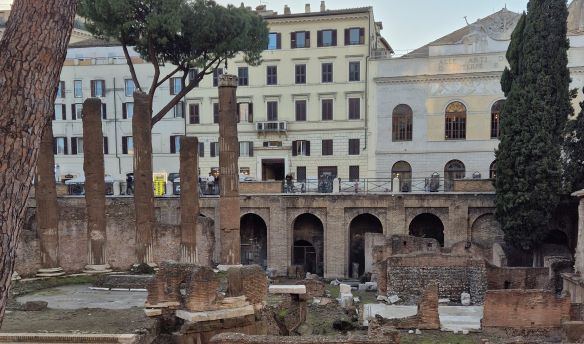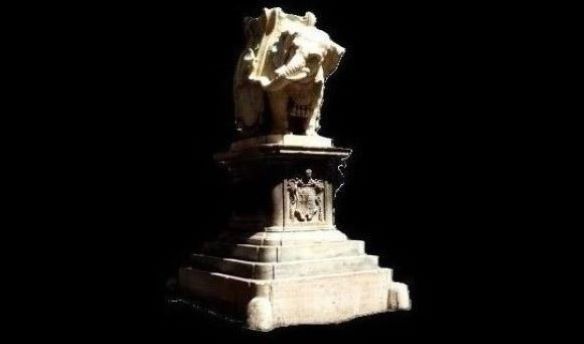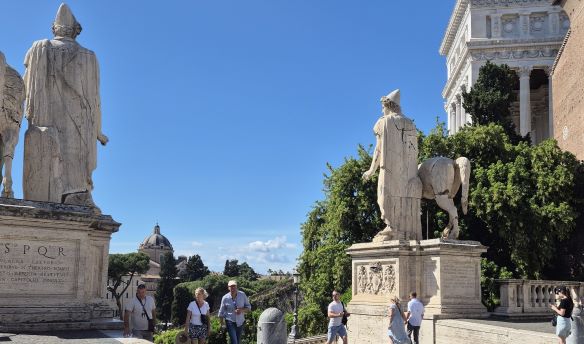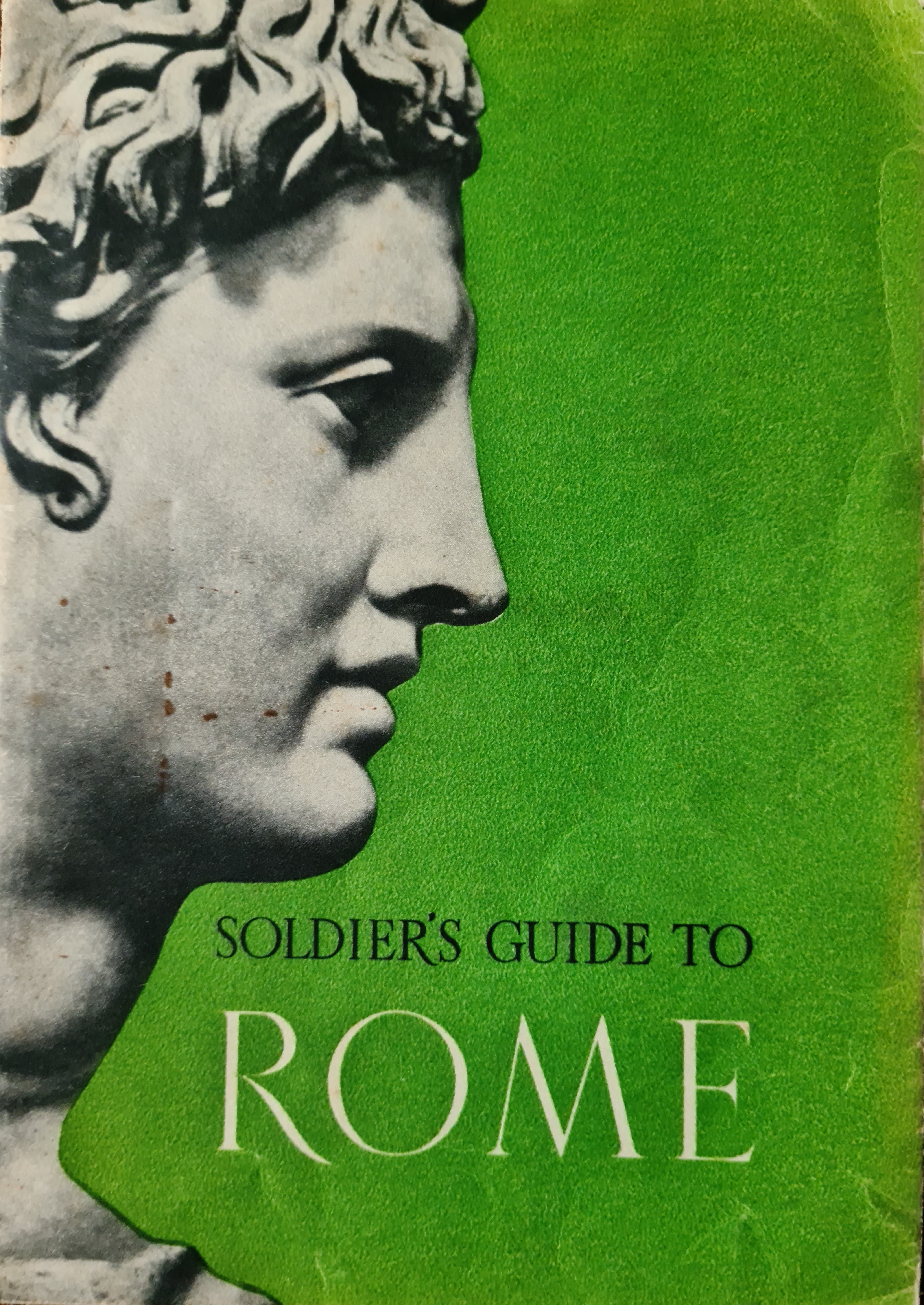
This Soldier’s Guide was prepared principally for British servicemen in Rome, around 1944.
A specialist in monuments and fine arts provided much of the text and ideas of what to see.
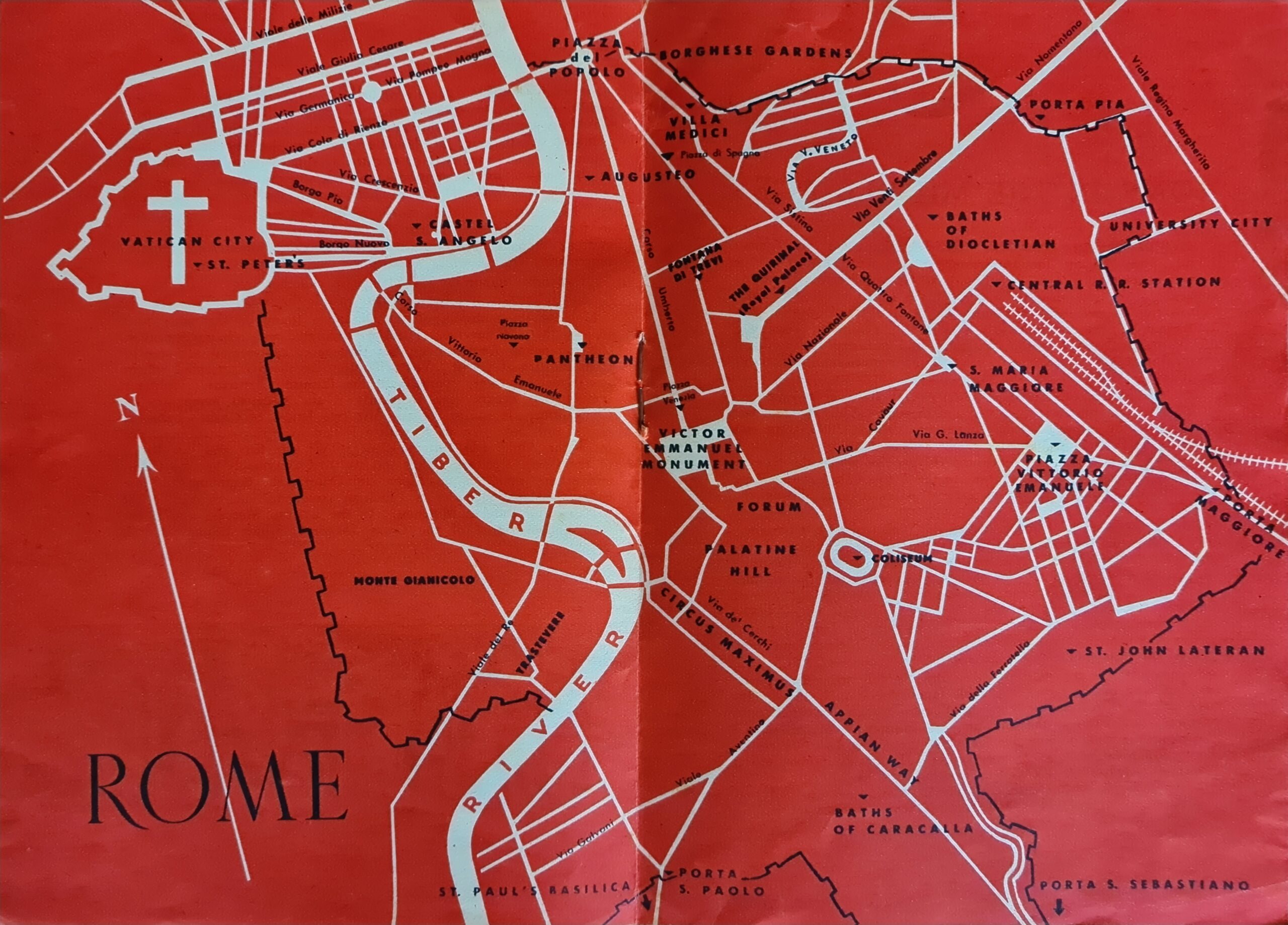
The guide does not suggest itineraries, leaving the reader to choose.
A map is in the centre of the guide, showing the location of many of the principal sights.
After the introductory sections, the guide is divided into chapters that relate to the main historical periods. Each chapter gives examples of art and monuments of the time.
The periods are:
Ancient, from 753BC to c.400AD
Early Christian, from c.70AD to c.500AD (these first two periods overlap)
The Middle Ages, from c.500AD to 1300AD
The Renaissance, from 1300 to 1550AD
The Baroque, from 1550 to 1800AD
The Modern, from 1800
Many of Rome’s most famous landmarks were designed and created during the Baroque period.
The dome of St. Peter’s, one of the prime examples, is pictured in the guide at the beginning of the Baroque chapter.
Other examples are included in this article.
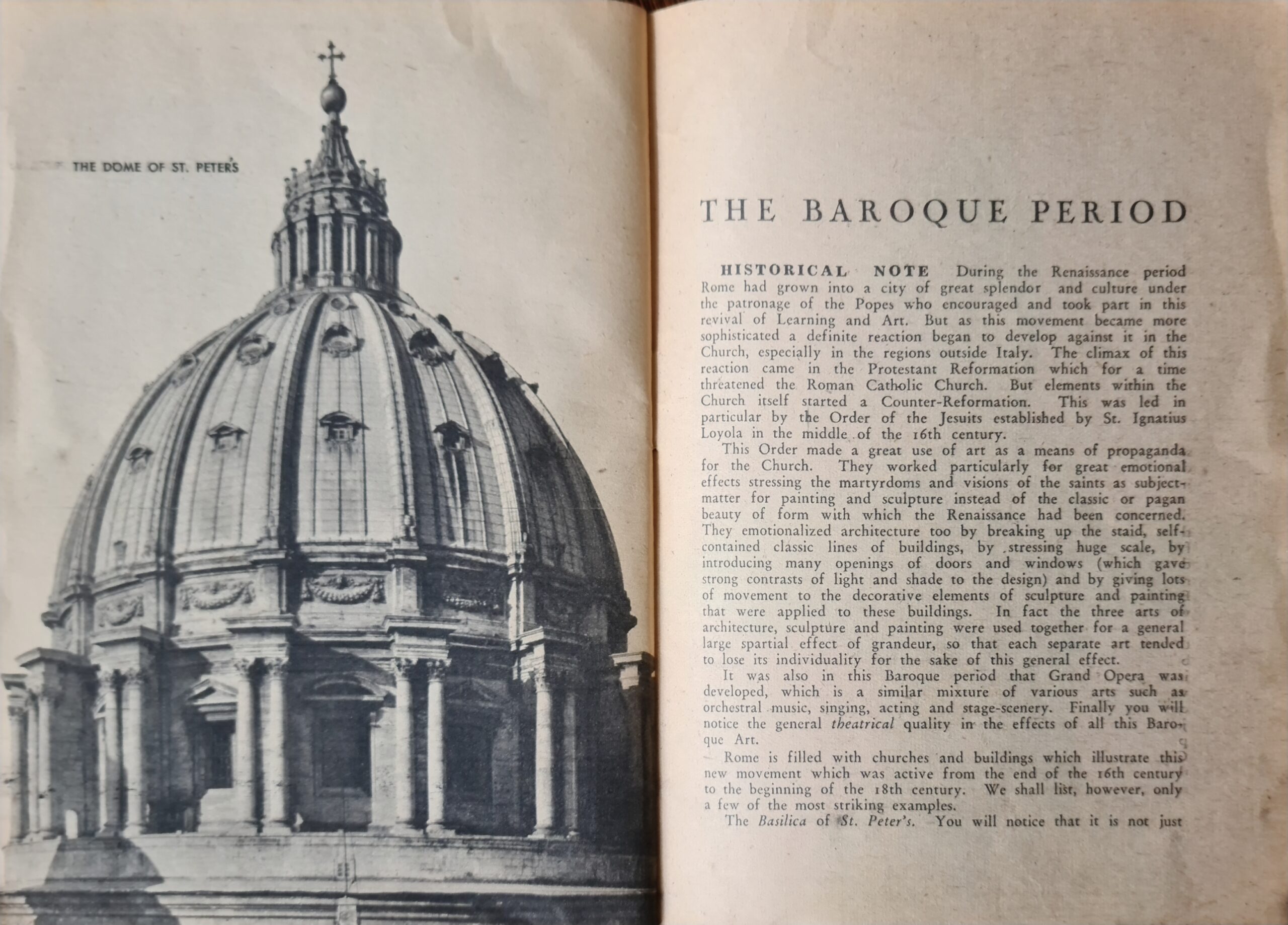
“… you will notice the general theatrical quality in the effects of all this Baroque Art”.
“The Piazza del Popolo, the Piazza di Spagna with its famous stairs, and the Piazza Navona with its great fountains … are excellent examples of baroque designing of space”.
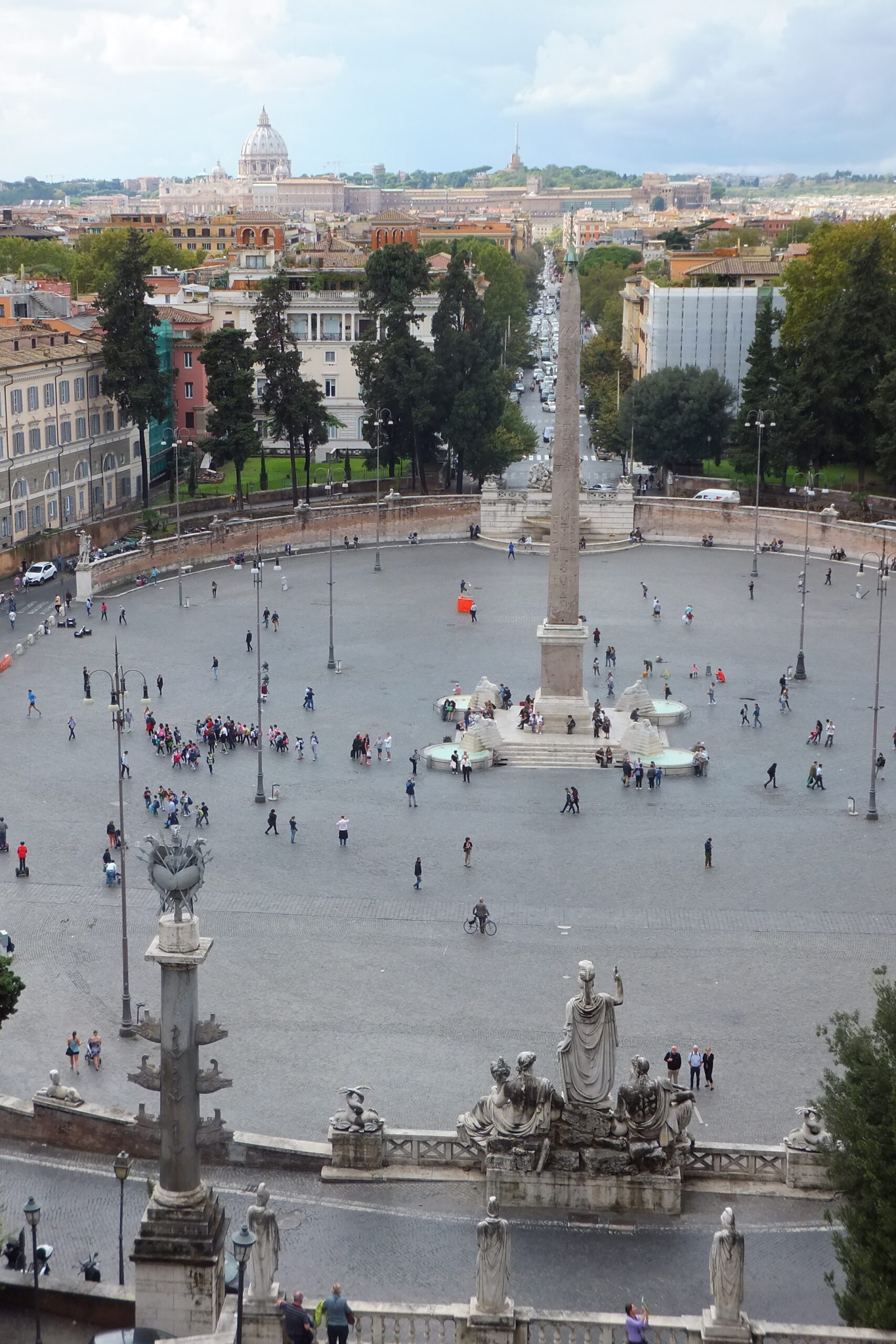
The immense Piazza del Popolo, one of the largest piazzas in Rome.
At its edge is the Porta del Popolo. Travellers from the north, in the days of the Grand Tour, would enter Rome through it.
In the background is the dome of St. Peter’s.
A view of Piazza di Spagna from Trinita dei Monti.
The piazza’s name derives from the seventeenth century, when the Spanish Ambassador to the Holy See took up residence in the Palazzo di Spagna.
The dome of St. Peter’s is visible on the skyline.
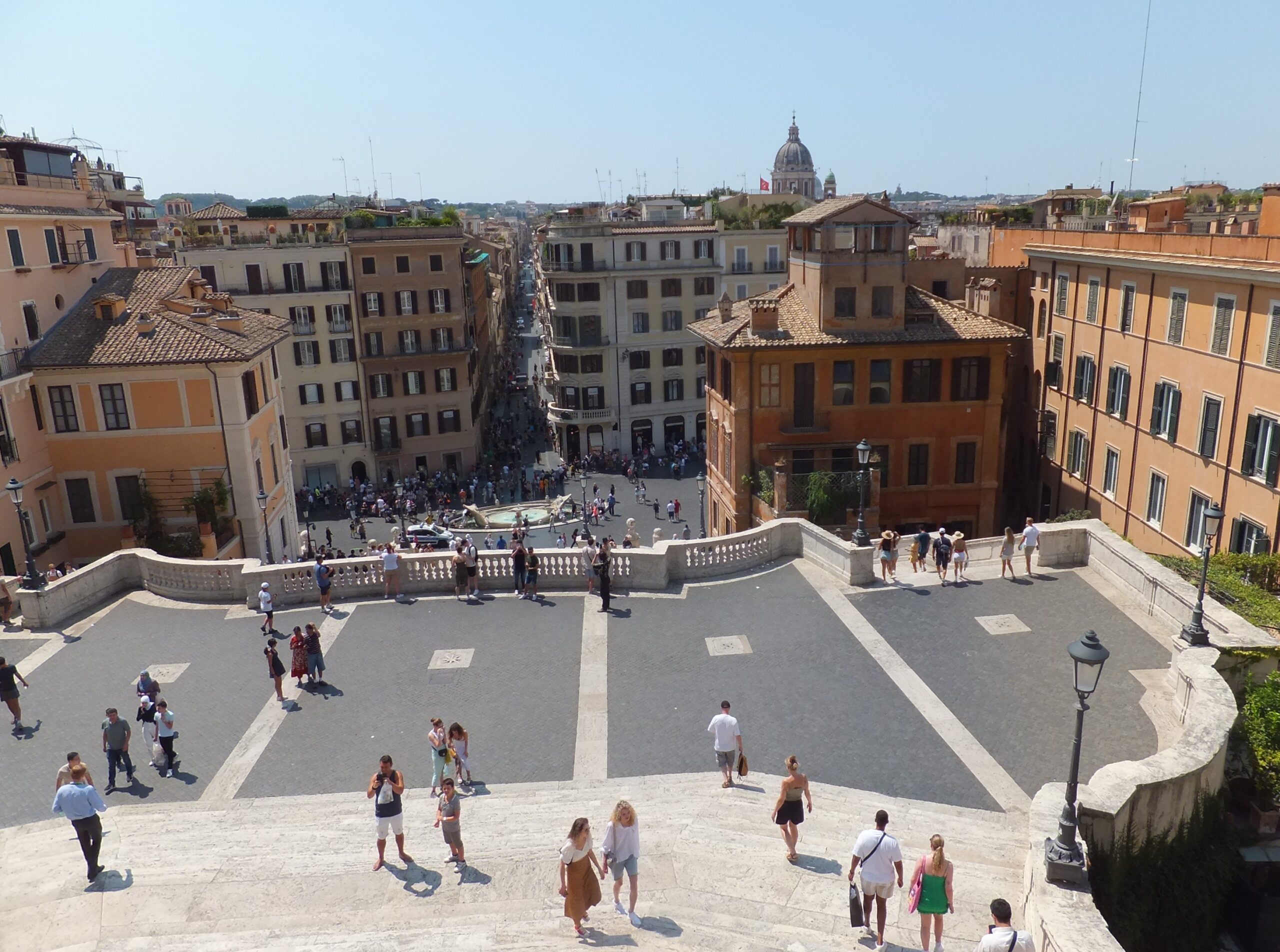
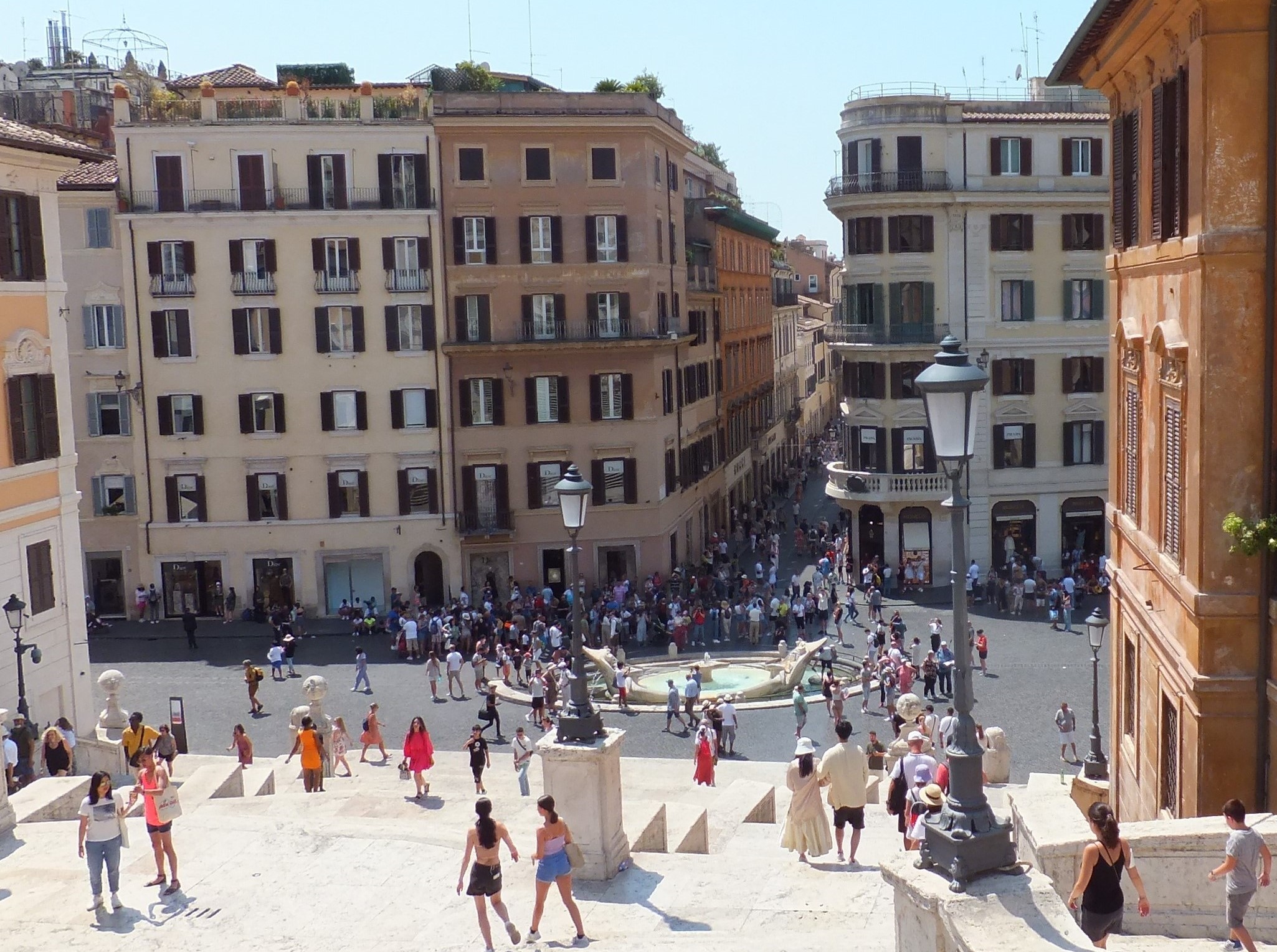
Piazza di Spagna from the Spanish Steps.
The fountain at the foot of the steps is the Fontana della Baracaccia (the Boat Fountain). It was designed by Bernini’s father, Pietro.
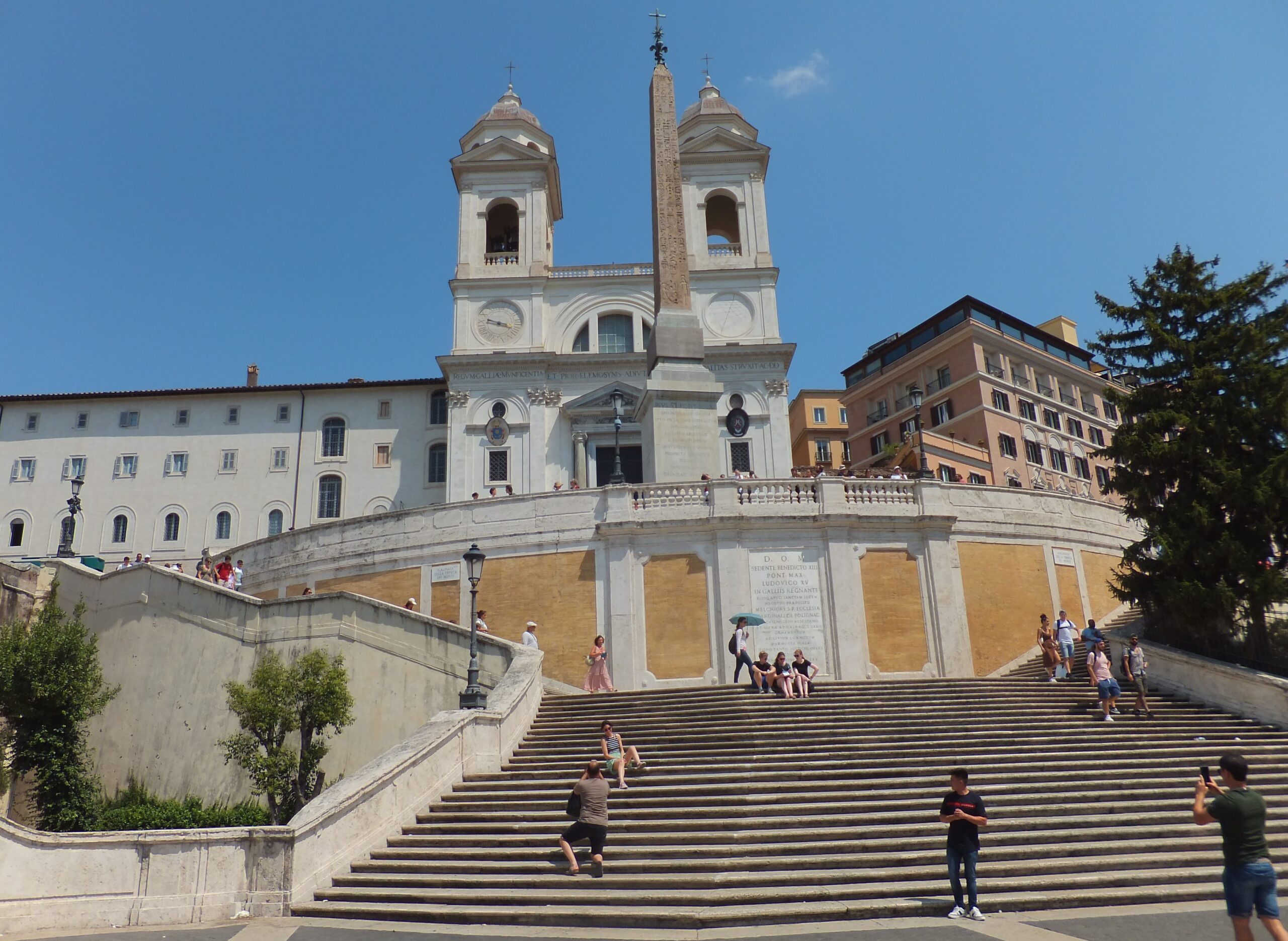
The Spanish Steps leading up to Trinita dei Monti.
Piazza Navona is oval in shape, mirroring the layout of the athletics stadium of Domitian, which stood on this site in the first century AD. It is possible to visit the underground remains of the stadium.
Piazza Navona has three dramatic fountains.
This photo is taken from the south of the piazza.
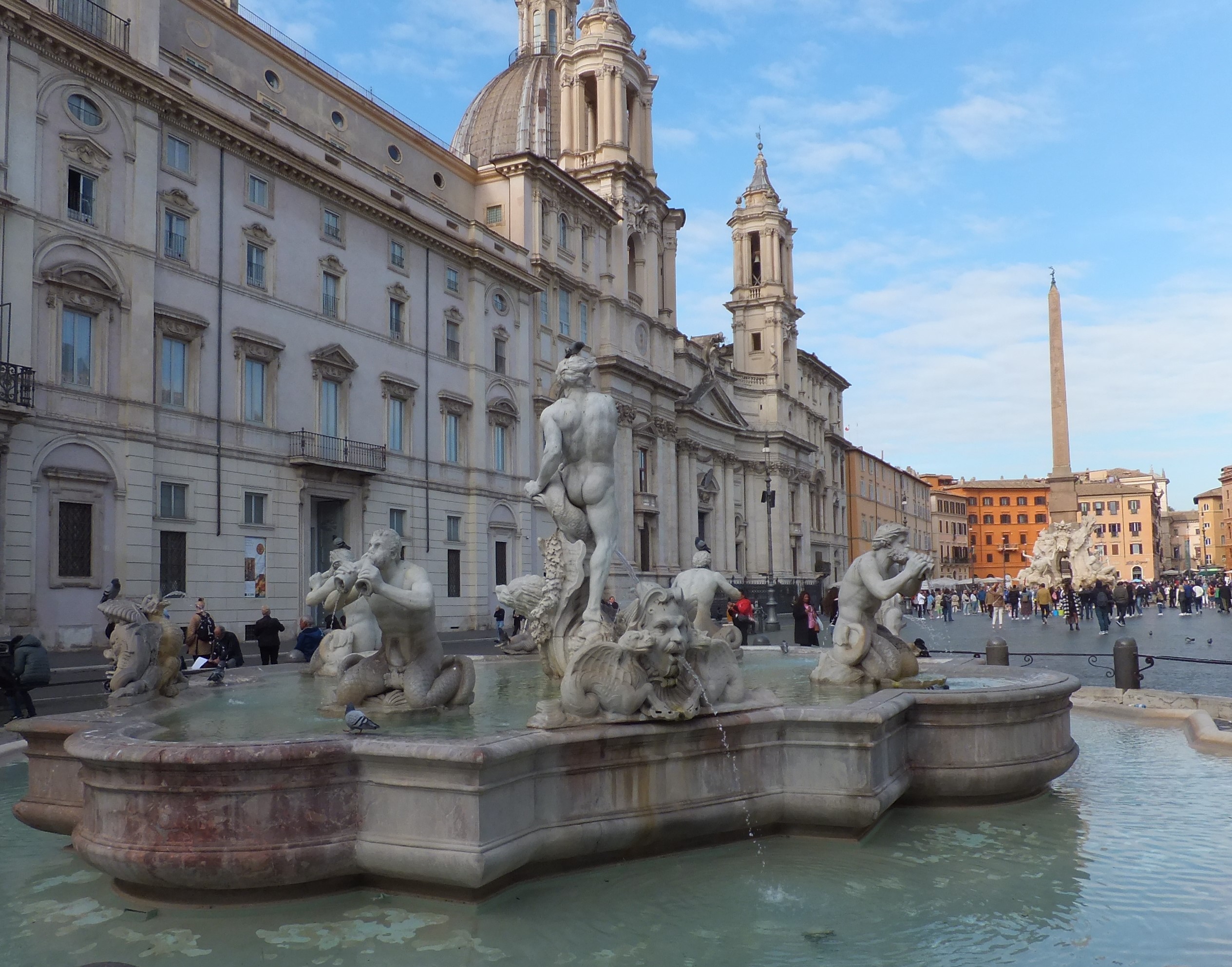
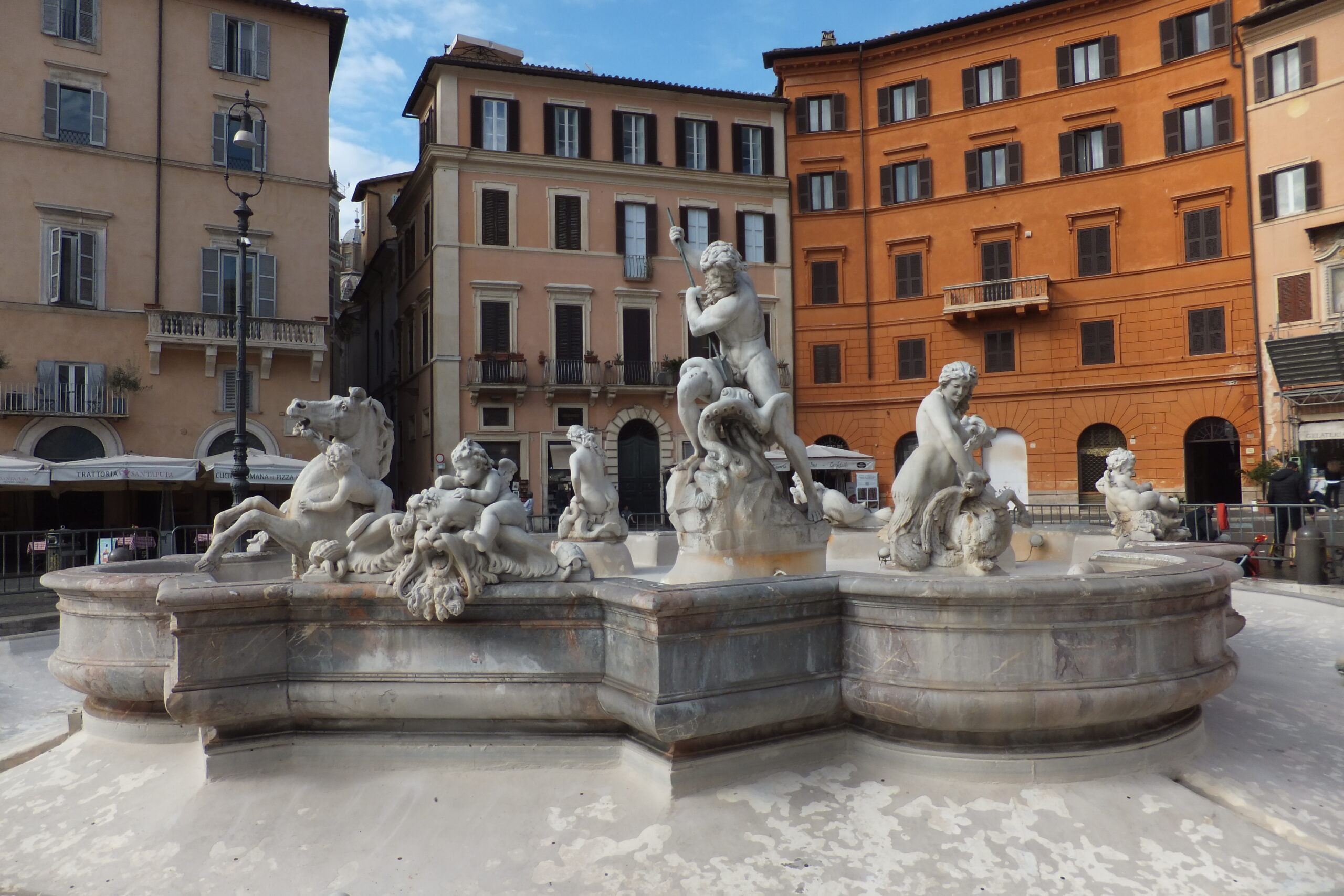
The Fontana del Nettuno was moved to the northern part of Piazza Navona at the end of the sixteenth century. It was located in a basin designed in 1574, in the same style as that of the Fontana del Moro at the opposite end of the Piazza.
The central figure of Neptune and the surrounding sea creatures were added in the nineteenth century.
The Fontana dei Quattro Fiumi stands in the centre of Piazza Navona. It was created by Bernini.
The stautes represent four rivers, which symbolise the four quarters of the world:
The Danube for Europe; The Nile for Africa; the Ganges for Asia; and the Plata for America.
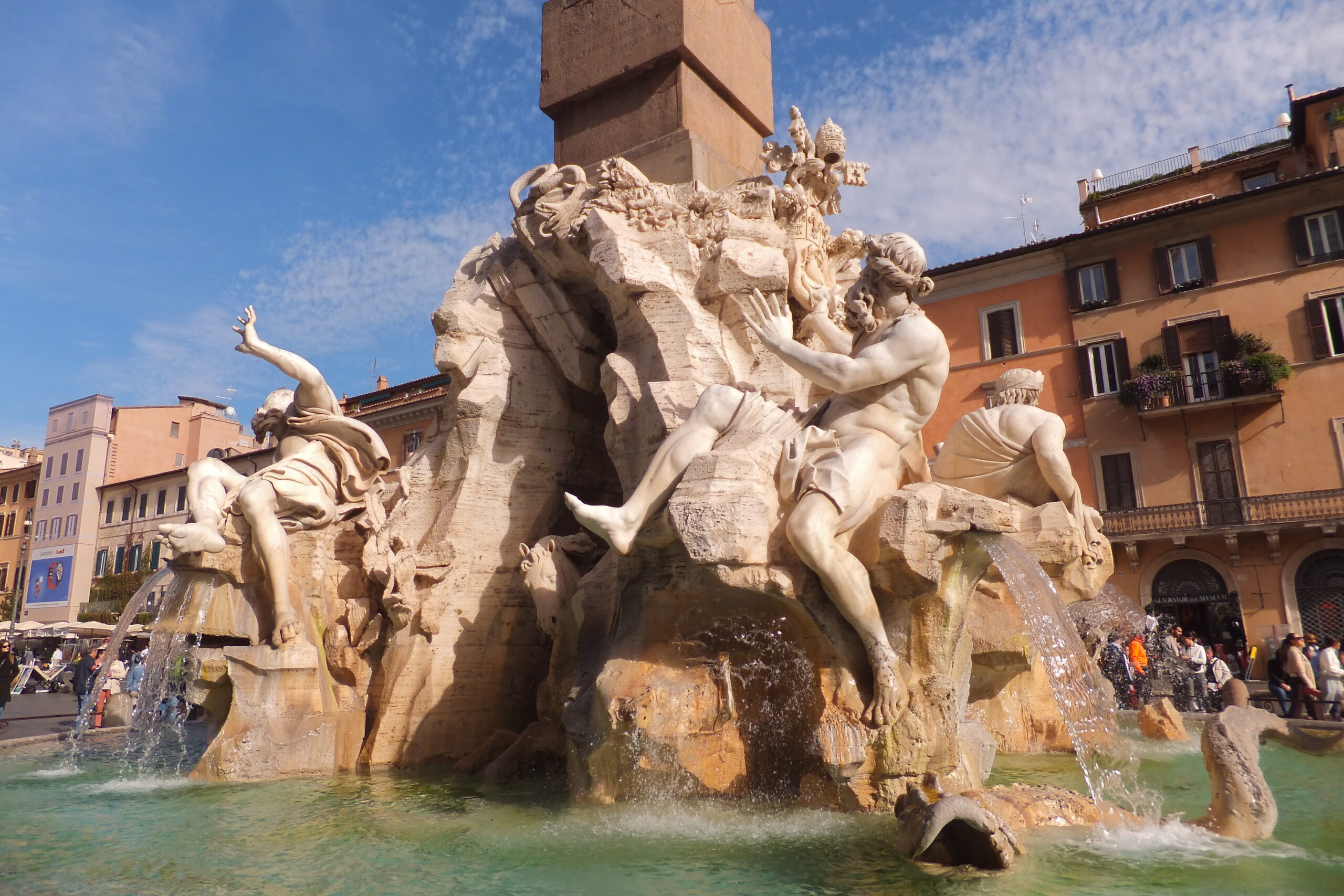
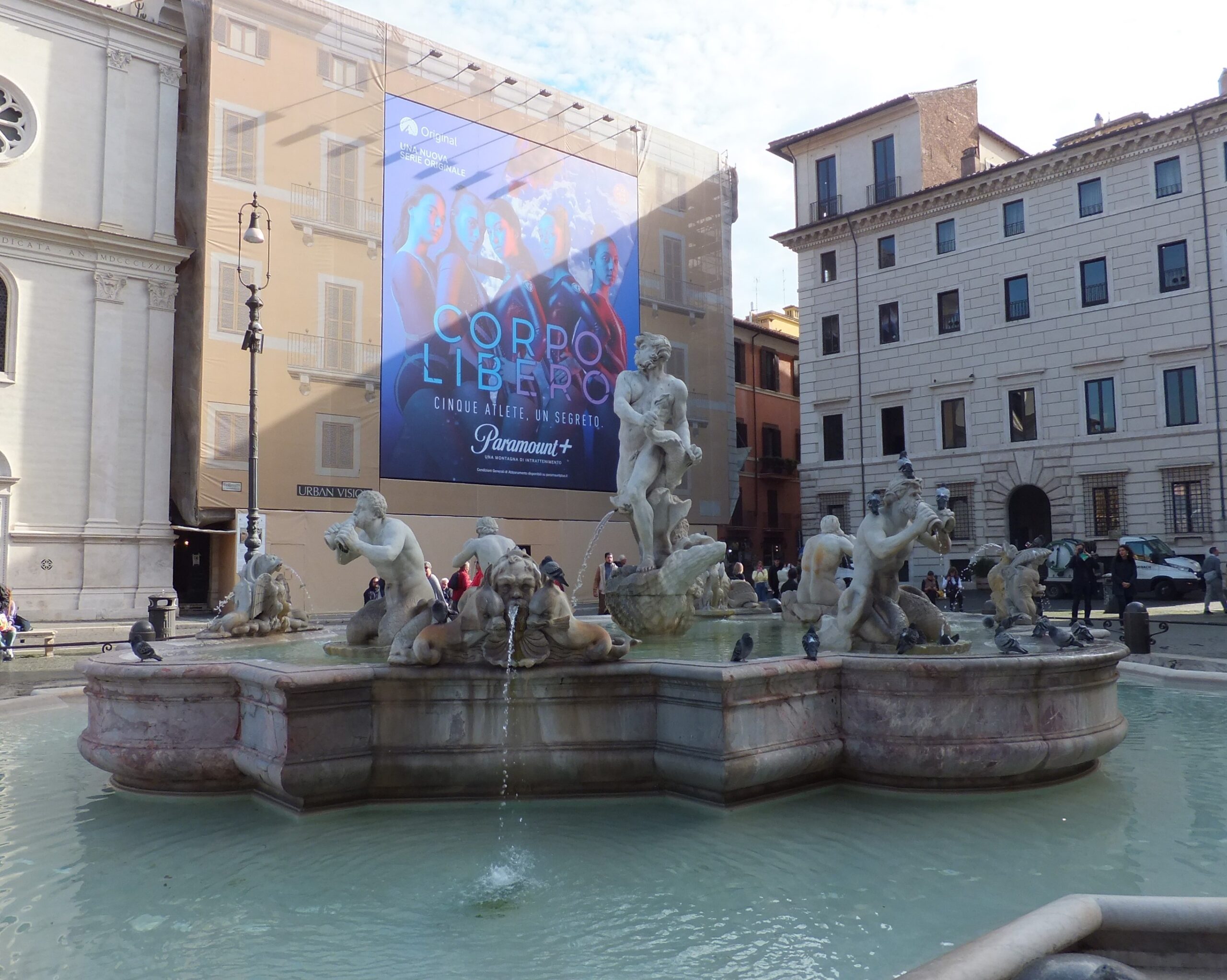
The Fontana del Moro is at the southern side of Piazza Navona. It was built in the sixteenth cenury and Bernini later designed the central figure.
Rome boasts many other famous Baroque fountains.
The Fontana delle Tartarughe in Piazza Mattei. The sea turtles at the top were designed by Bernini.
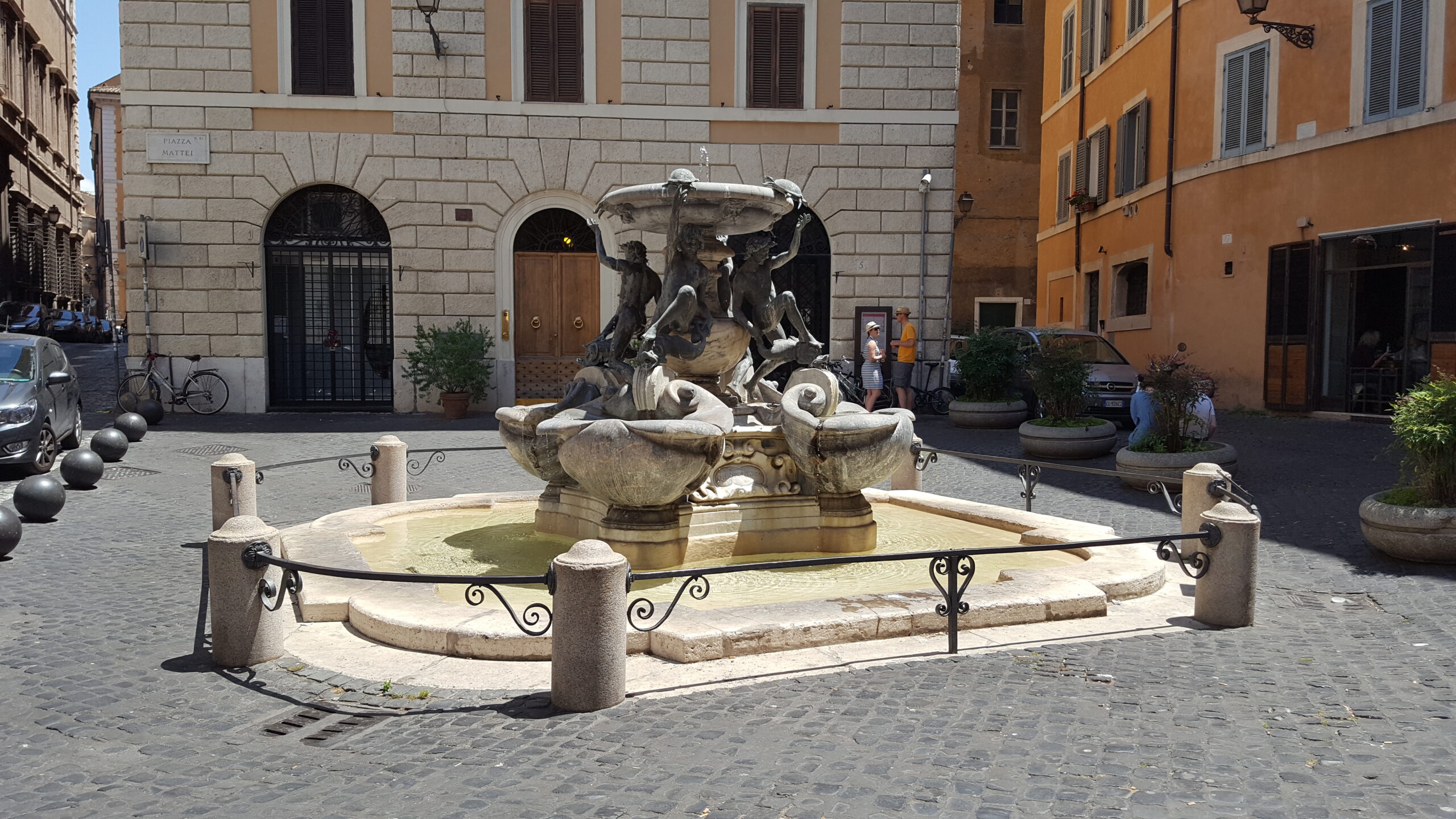
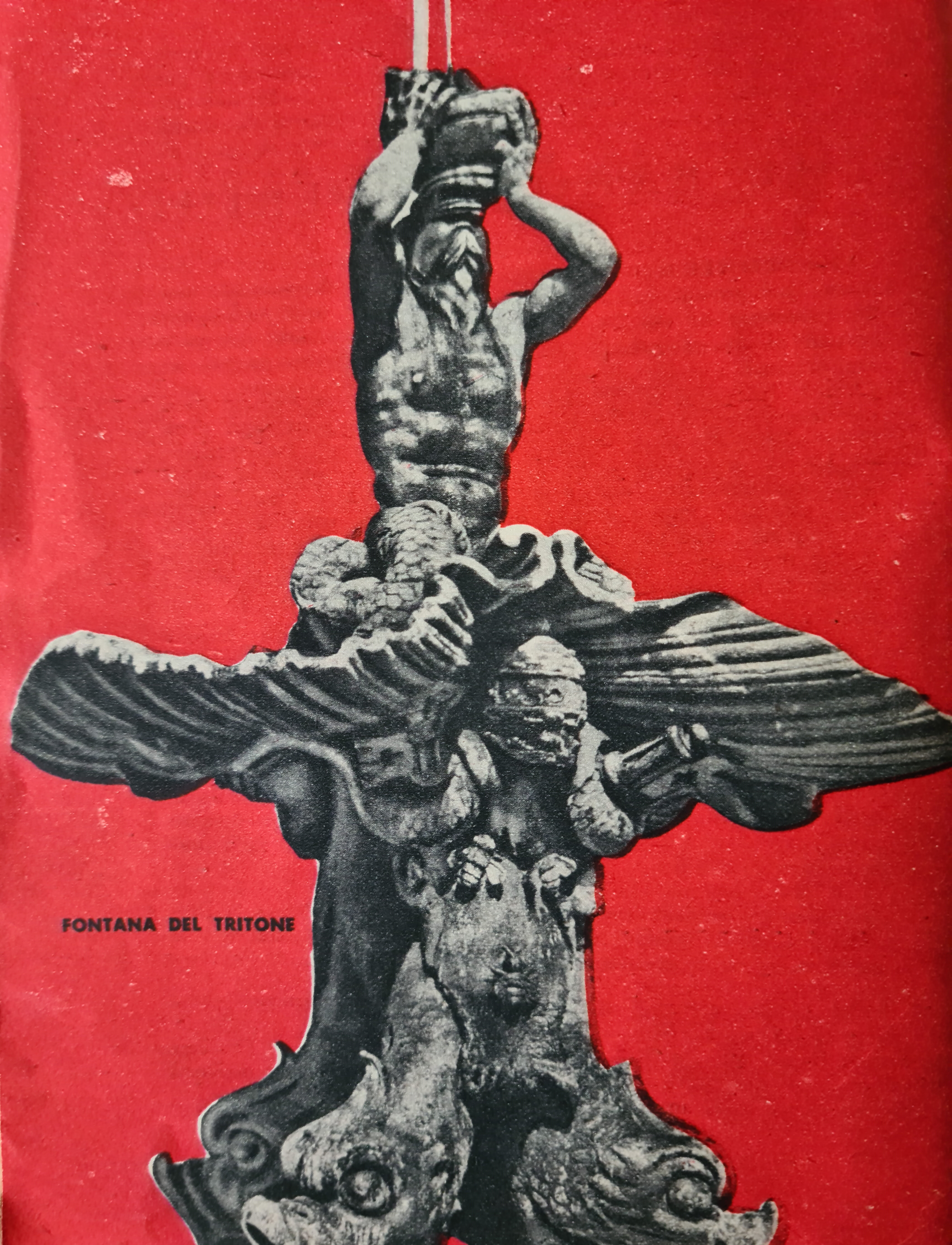
This illustration in the guide is of the Fontana del Tritone. It stands in the busy Piazza Barberini.
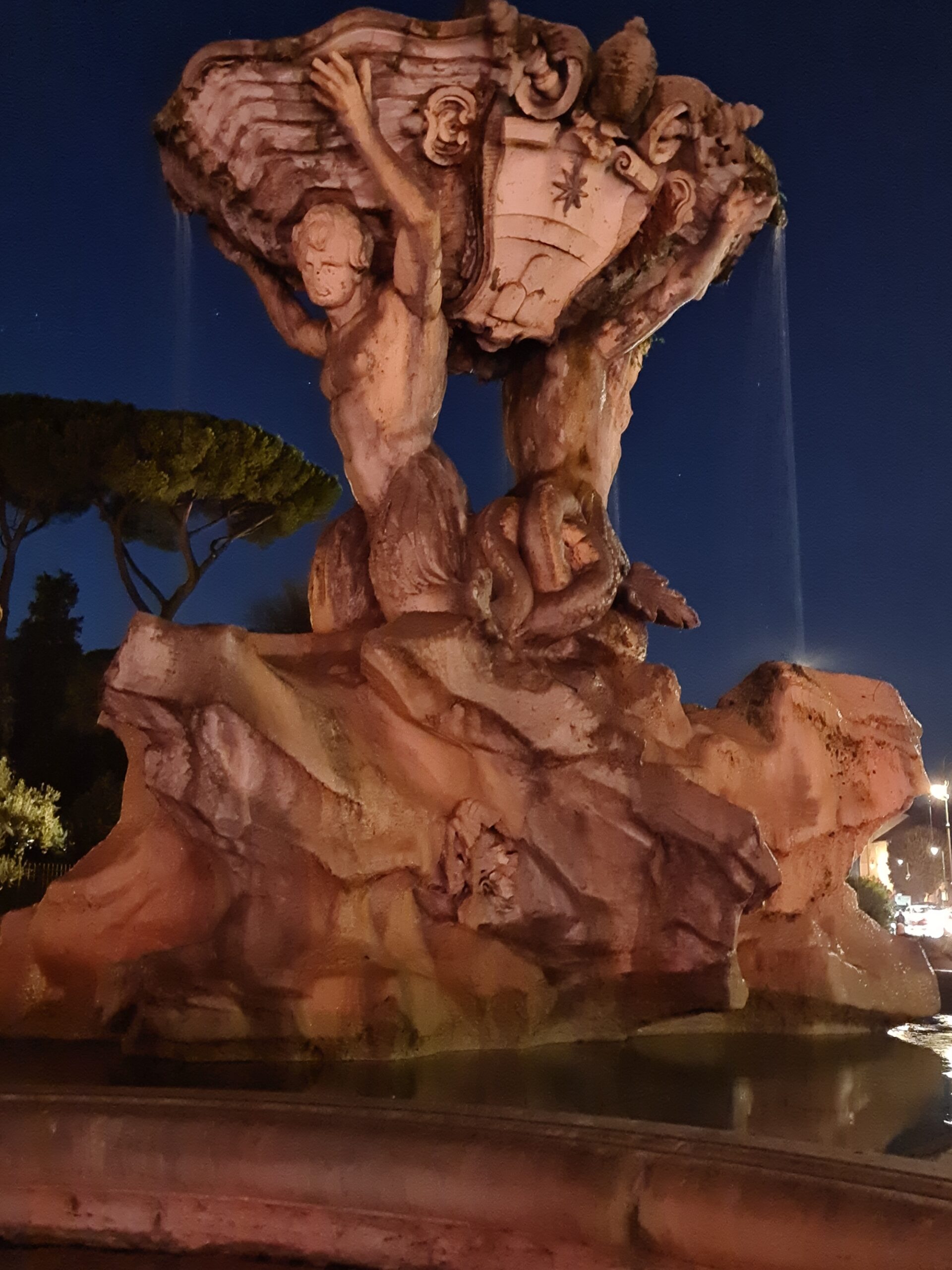
The similarly named Fontana dei Tritoni was also designed by Bernini.
It stands in Piazza della Bocca della Verita.
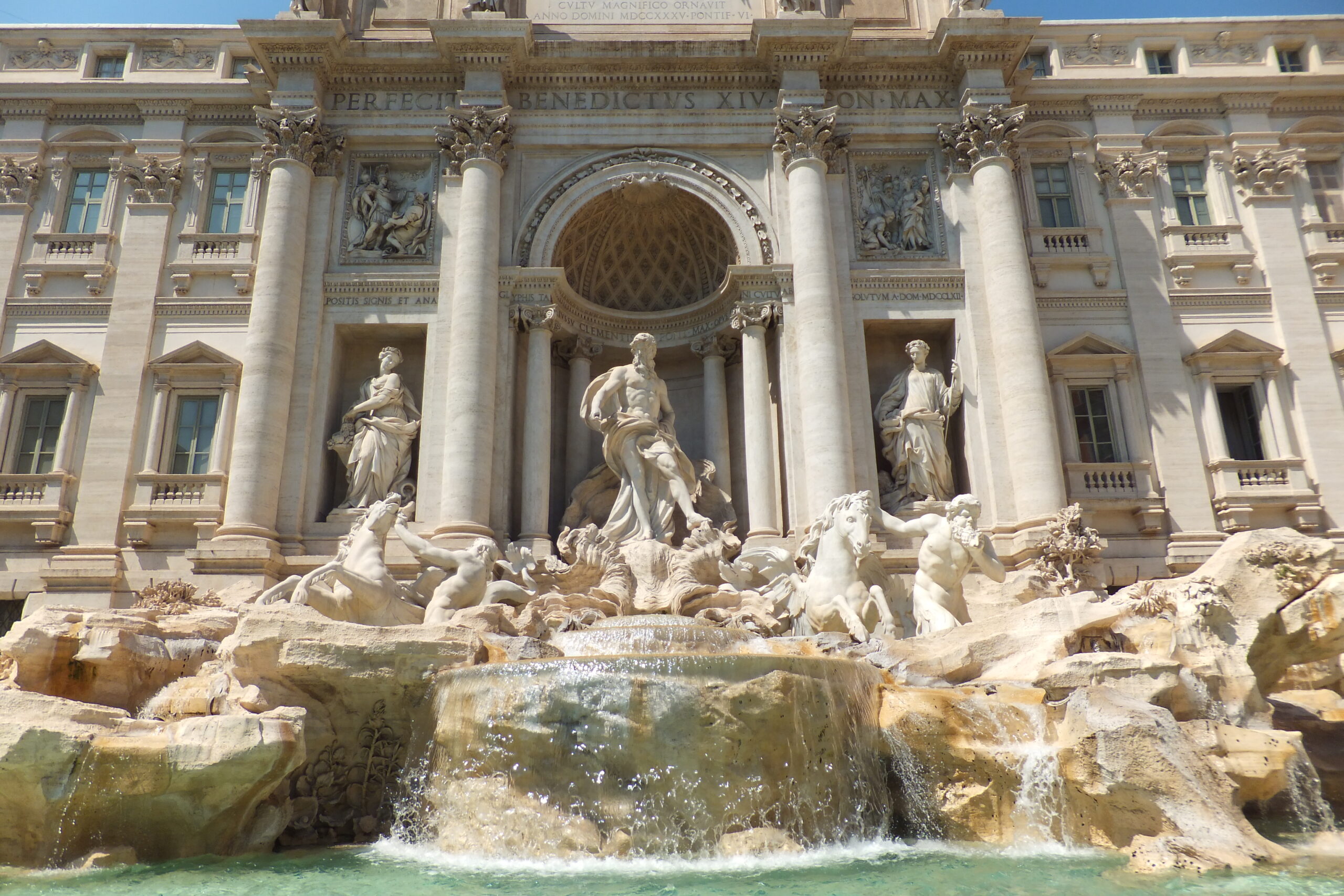
Perhaps the most famous fountain in Rome: the Fontana di Trevi.
Its scale is breathtaking.
The central figure is Oceanus, who rides a chariot drawn by sea horses and two tritons.
Servicemen visiting the Fontana di Trevi in the mid 1940s would probably have had a better view! The fountain today attracts huge crowds, although it tends to be quieter in the evening or in August.


